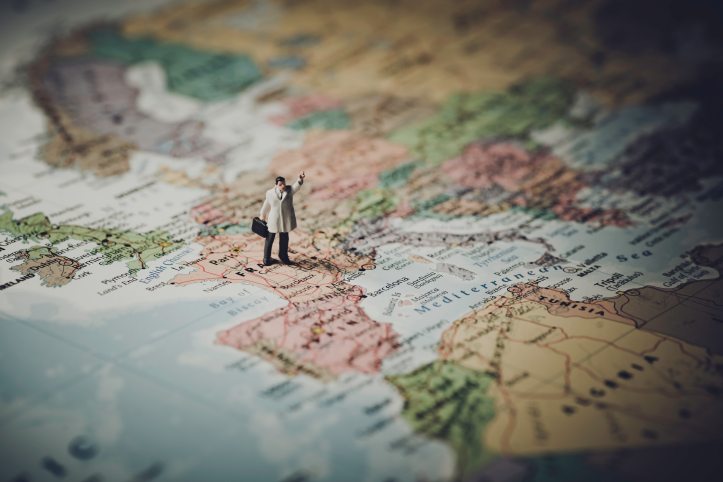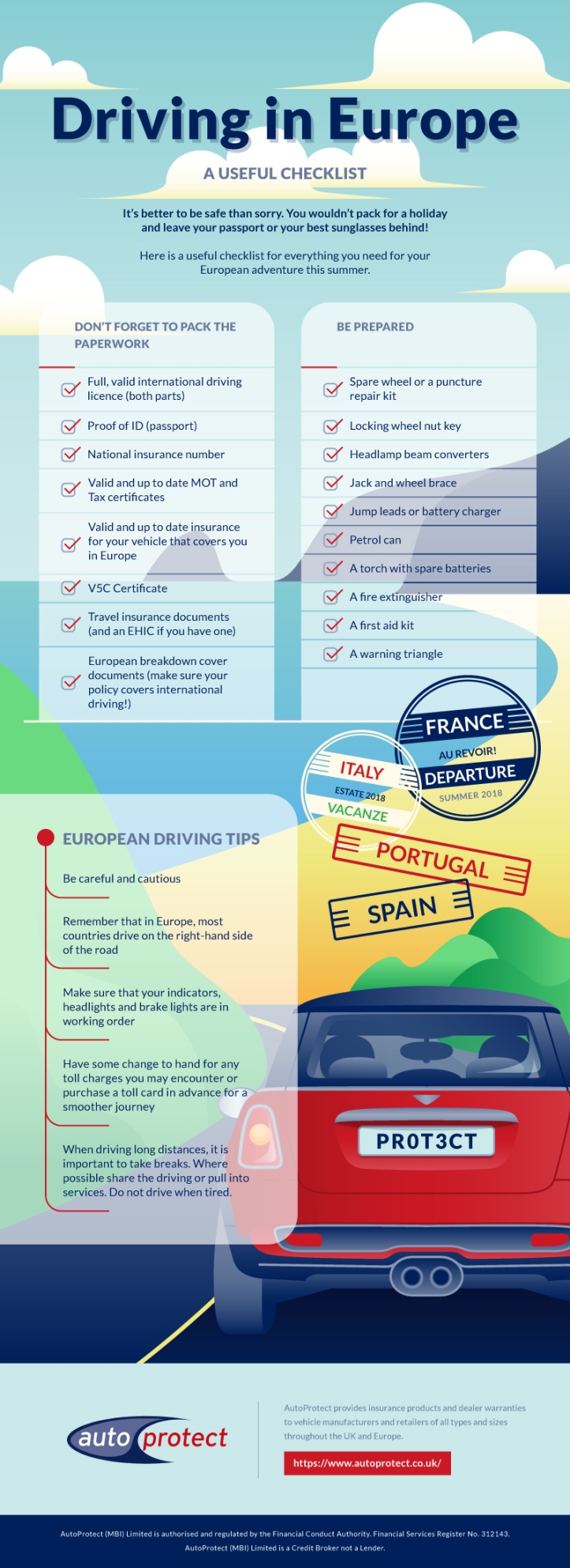The thought of driving abroad can cause panic in many minds, but this guide is here to show you that there is really nothing to worry about. I’ve even included some top tips for you to get ready for a motoring adventure.
I first drove to France from the UK over seven years ago, and I’ve driven the tribe (wife and three kids) abroad a few times each year since then. I’ve tried some different routes and found certain things that work well and don’t work so well.
I’m going to talk you through some of that experience, and reassure you that driving in a different country really isn’t a tough thing to do.

Get prepared:
Depending on what country you are travelling to, you will need to prepare yourself and your car for the journey – every country will have its own rules and laws, and it is essential that you check these and get prepared in plenty of time.
As an example, French laws necessitate that you carry things like a high-vis jacket, spare bulbs, an unused breathalyser and other items in your car whenever travelling.
There are other things to consider, including your headlights – make the necessary adjustments as you will be driving on the opposite side of the road (and don’t want to blind oncoming traffic!). You can either get adhesive beam adjustment stickers (like these), or you may need to pop to your local garage for a manual adjustment depending on your car (check the manual).
As you can tell, there is a whole host of things that you need to consider beforehand, and that’s without mentioning the obvious such as maintenance checks on your car.
A handy checklist for driving in Europe (thanks to Auto Protect) is below:

Discover more summer driving tips at Auto Protect
Getting there:
Eurotunnel
Our first choice when we drive abroad as a family is via the Eurotunnel (Folkestone). It’s always such an easy and straightforward process, that I would wholeheartedly recommend it.
We book in advance and receive an allocated time for our crossing. Each time we have travelled we arrive at the crossing early, and we have often then been given the option to board an earlier train which is always a nice bonus, and saves hanging around.
The waiting area is a great place to stretch your legs and has lots of activities to keep your little ones busy (as well as the usual newsagents and food/drink outlets). There is even a dog exercise park which is always very busy, and a great way for your pooch to stretch his or her legs before your journey under the Channel. We enjoy watching the dogs have fun as we eat some food before our journey through the tunnel!
The trip once you’re on the train takes around thirty minutes, your passport/ID checks take place on the British side, so once you drive off onto the French side you are straight onto the Motorway – it couldn’t be simpler!
Ferry Crossing
We have also travelled by Ferry from Dover to Calais, and I’m sorry to say that it wasn’t the best experience. There were significant queues and very slow check in/passport checks which made the whole boarding process pretty chaotic with multiple queues and very little organisation (and meant we missed our original crossing time despite being there over two hours early!).
Once on board we did enjoy some of the amenities of the ship (shops mainly), and the kids enjoyed the views of the sea throughout the crossing (the crossing itself was quite peaceful); but the check-in process left a real sour taste, and we have stuck to the Eurotunnel ever since.

Actually driving abroad
Here comes the fun bit. There are some crucial things to remember about driving in Europe:
Blind spot – you will have a blind spot in different areas as you are driving on the other side of the road – obviously use your mirrors, and apply extra caution at all times, especially when pulling out of junctions or overtaking (bear in mind you will be overtaking on the left, and not the right).
Be vigilant – you may be a super confident driver in the UK, and there is no reason not to bring this confidence with you, but at the same time you have to stay alert and watch out for any unexpected junctions, roundabouts or short sliproads.
Roundabouts – ah the old favourite. Yes there are roundabouts, and yes they give way to the other direction. I wont lie – it does feel a little odd to begin with – however, as with anything, a little practice and you’ll be fine.
Tolls – they pop up every now and again on motorways as well as A and B roads, and despite your best efforts, you will probably end up on one at some point! Many require coins instead of cards, so have a few Euro’s ready just in case.
Sat Nav – the saviour of most drivers! Of course most phones now do the job of the traditional Sat Nav, with the likes of Google Maps and Waze free to download. Just make sure that your phone is set up to be used abroad, otherwise you may get a nasty surprise if you either can’t get data (and therefore cant get any directions), or by getting a big bill when you get home for using data abroad! Most Networks now allow data usage in the EU as part of your package, but it’s best to check first. Also make sure you have a phone holder on your dashboard or window as holding onto your phone is a big no-no.

Finally
Enjoy it!
Enjoy the freedom of being able to have adventures in your car without worrying about what metro train or bus to get.
Enjoy being able to drive from country to country with relative ease (I’ve often driven to neighbouring countries for a day trip when on holiday).
Enjoy being able to visit the Carrefour or Lidl and stock up on cheap wine!
Enjoy your holiday and the experience your car journeys will bring.
This post was brought to you in collaboration with Auto Protect.
Driven all around Europe and my first experience was in a decrepit camper van at 18…pretty sure I wasn’t meant to be driving it 😀
LikeLiked by 1 person
That sounds pretty awesome! I’d love a Camper Van ☺️
LikeLike
This article is very useful whether you’re coming from a different continent or live in Europe. I’ll use it next time we travel abroad. (I’m European.)
LikeLiked by 1 person
Thank you glad you liked it!
LikeLike